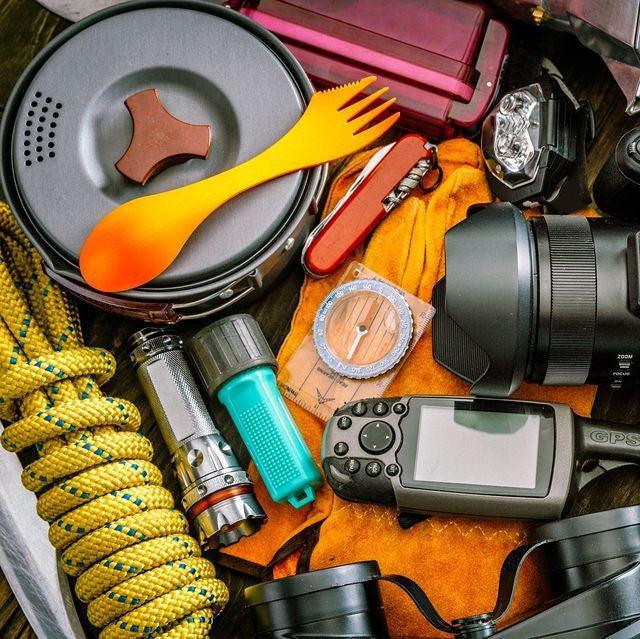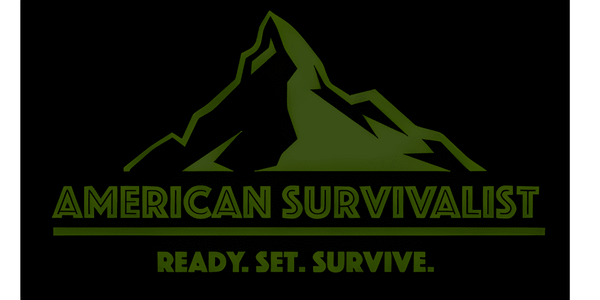How to Begin Canning
Share
Canning is important for any survivalist, prepper or homesteader to learn if you want to truly make the most out of the food you have. Some people think canning is just for gardeners, but there are endless foods you can get ingredients for at the grocery store—soups, sauces, salsa, meats, pickles, jams, jellies, vegetables- that are perfect for canning and let’s face it, it only makes sense to add this important skill to your prepper’s arsenal.
Being fairly busy and I used to think I didn’t have the time for canning, so originally I stocked up on MREs and dehydrated foods for the most part. I realized, however, that in a SHTF scenario my family is going to be much happier and more satisfied with a variety of food options – it’s sort of one of the little things I can do to make life a little better in a potentially dangerous and uncertain world. Besides, once I got into, I found out that canning was actually really fun and produced foods that my family loves to eat regardless of the reason.
Water Canning vs. Pressure Canning
There are two basic ways you’ll be canning in your home and for more reasons than one I recommend getting comfortable with both water bath canning and pressure canning. There are certain foods that require different canning conditions, and when it comes to preserving food you don’t want to make any mistakes.

Pressure canning may simply deter more people due to the need of a pressure canner, which looks sort of like, but should not be confused with, a pressure cooker. You should not let this deter you, however, because both methods are important if you want to become a well-rounded canner.
Canner’s Rule of Thumb: Low-acid foods must be processed in a pressure canner. Items you pickle and most fruits can be canned in a water bath. Pressure canning allows your jars to reach a much higher temperature, allowing you to can more types of foods. If you are using a water bath canning method, your food must have a high acidic level (or have something like vinegar that has a high acidity in it) in order to preserve properly at a lower temperature. In other words, if you pickle asparagus in a vinegar brine, the vinegar raises the acidic pH level and therefore can be canned without the extreme temperature a pressure canner provides. If you want to preserve your asparagus in water, however, you will need a pressure canner. You will also use a pressure canner for soups, stews, stocks, sauces and really anything you can imagine canning.
Step By Step Canning How To
The steps to prepare your jars for water bath canning or for pressure canning are similar and often come with the recipes you use. However, there are a few common steps that are present in all forms of canning preservation.
1. Find Your Recipe
Whether you are pickling, making jam, or just trying to preserve some basic vegetables you will want to have some good recipes that you family will enjoy. Most canning sets also come with a recipe or cookbook to help you get going. I’ve included a few of my favorites at the end of this article.
2. Prepare Your Canning Pot & Jars
You want to make sure that you have your canning jars, even if they are brand new, washed thoroughly. Then place a rack in the bottom of your canning pot and place the jars you are using in place. Fill the jars and the pot generously with water in order to bring it right to the edge of boiling. This sterilizes the jars and keeps them at the best temperature for canning conditions. You can finish the rest of the steps while this is coming to a boil.
3. Prepare Your Lids
You will want your jar lids (not the rings) warm to make a better seal. Keep a sauce pan with water on a low simmer and keep the lids in here until you’re ready to use them.
4. Prepare Your Food and Fill Your Jars
Once you’ve prepared for food according to your recipe, remove the jars from the boiling water in the canning pot, carefully pouring the water back in. This will be when you are really glad you got that canning set and you have that jar holder to keep your hands safe.
Now fill with your prepared food product. You will need to leave usually between ¼ and 1 inch between the food and the top of the jar, the exact headspace should be indicated in your recipe. This is important, to get a good seal it must not be too full. Place on the lid, wiping it clean before you twist the lid ring on to secure it and return the jar to the pot of boiling water.

5. Start Your Timer
Start a timer and cook for the time allotted in the recipe. Once they’ve been in the water bath or pressure canner for the allotted time, remove the jars carefully and set them on a towel to cool. If canning went properly you will begin to hear the ping of the jar lids soon after they are removed from the heat. This ping means that a vacuum seal has taken place and you’re canning project is a success.
6. Check Your Seal
It never hurts to be certain, especially in food preservation, as simple mistakes can be life threatening. After the jars have cooled to room temperature you can remove the jar lid bands and check the seal is secure.
7. Store in a Cool, Dry Place
I like to wash off all my jars one more time before I store them, just in case any food residue still remains. My family never minds if I have a few jars that don’t can properly, we just eat those one right away and store it in the refrigerator for safe keeping. The rest of your jars can stay safe for up to a year, certain food even longer.
Three Recipes to Get You Started
There are a million recipes out there, so get to looking. You might find an investment in a great canning cookbook might be a good idea for you, but here a few of my favorites to get you off and going. I included recipes that could be used in a variety of different applications, but with the same process so be creative and come up with your own recipes too.
Apple Jam (Water Bath Canning)
- 6 cups peeled and diced Apples (Tart apples work best)
- Juice of 1 lemon
- 2 cups apple juice
- 1/2 cup raisins
-
1 tsp ground cinnamon
1 tsp Nutmeg - 3 Tbsp Pectin
- 1-1/2 cups sugar
Makes approximately 48 oz of jam
Bring the apples, lemon juice (you can add some lemon zest too if you’d like) to boil in a large saucepan. Reduce heat and simmer until apples are soft. Remove from heat and stir in pectin. Add raisins, nutmeg and cinnamon. Return mixture to the stove to boil again for 5 more minutes. Remove from heat and stir in sugar.
Pour hot jam into the jars leaving 1/4 inch headspace between the jam and the lid. Place in boiling water bath canner for 10 minutes. Remove jars and cool.
Pickled Green Beans or Dilly Beans (Water Bath Canning)

- 3 lbs green or yellow wax beans
- 3 & 3/4 cups vinegar
- 3 & 3/4 cups water
- 1/3 cup pickling salt
- 6 cloves garlic
- 6 springs of dill
Makes 6 – 16 oz Jars of Dilly Beans
Place the beans, dill and garlic evenly spread between the 6 jars and leave 1/2 inch headspace at the top. Fill the jars with the vinegar liquid, leaving the same amount of headspace. Be sure to remove any air bubbles you can from around the green beans themselves.
Seal the lid and cook in water bath canner for 10 minutes. Remove jars and cool.
Beef Stock (Pressure Canning)
- 4 lbs of meaty beef bones
- 8 cups water
- 1 chopped onion
- 3 or 4 chopped garlic cloves
- 1 sliced carrot
- 1 sliced celery stalk
- 1 bay leaf
- Salt
Makes approximately 64 oz of Beef Stock
Bring water and beef bones to a boil over a high heat. Reduce heat to a medium low temperature and add vegetables and seasonings. Boil for around 2 to 3 hours. Season to taste. Some people add bouillon if they want a stronger flavor.
Remove the bones and strain stock through a fine sieve. Allow the stock to cool until a layer of fat solidifies on the top. Remove the fat. You will want to heat up the stock again before you fill the prepared canning jars with the liquid. Ladle the hot stock into the jars leaving 1-inch headspace.
Seal the lid and place the jarred beef stock in a pressure canner at 10 pounds pressure for 20 minutes if you are using pint jars or 25 minutes for quart jars. Remove jars from canner and let cool.


